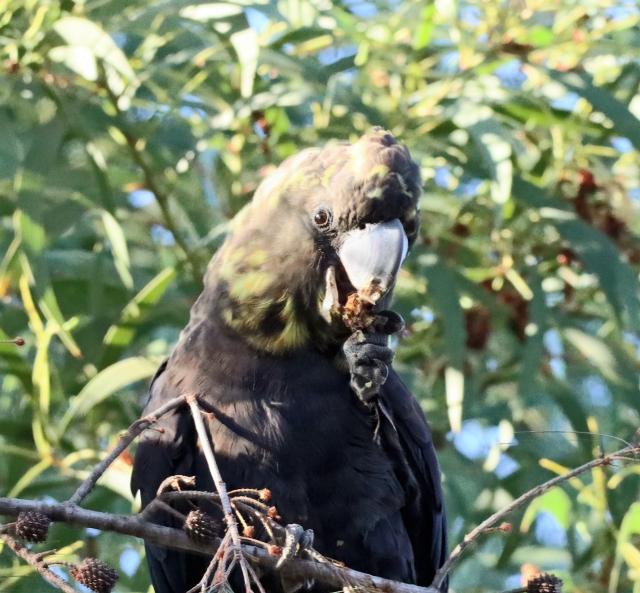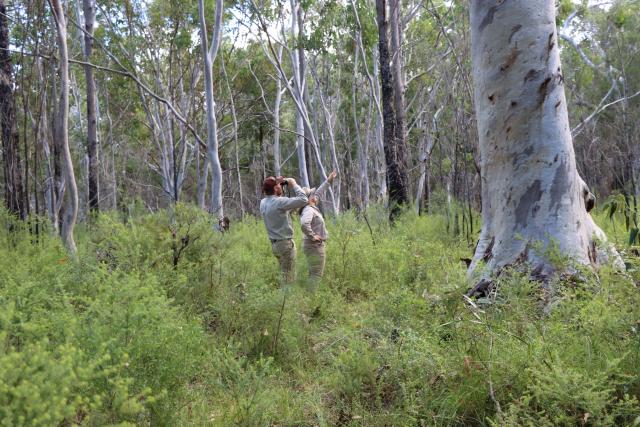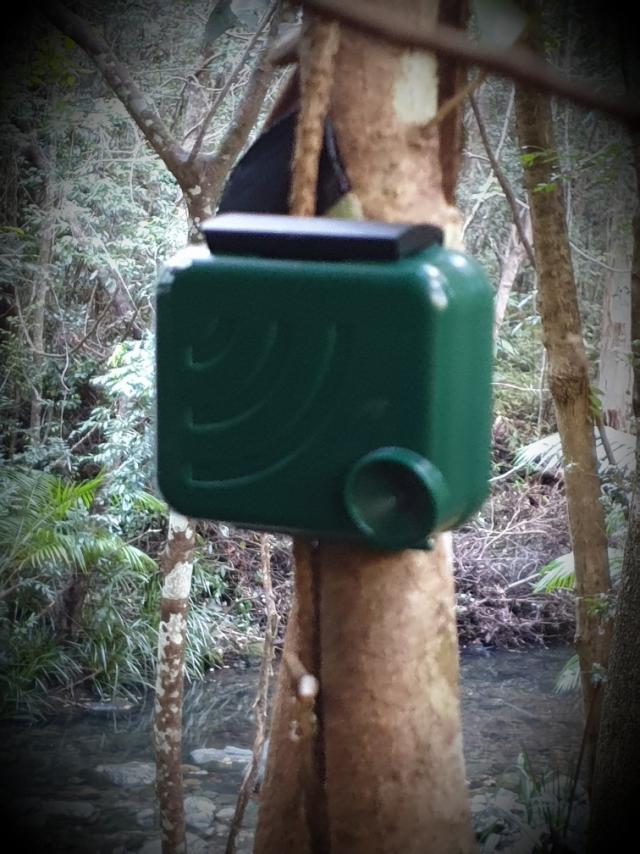Glossy Black Cockatoo (GBC) nesting sites in Noosa Shire are to be identified using specially designed acoustic software in a new research project undertaken by Bushland Conservation Management in partnership with The Noosa Biosphere Reserve Foundation (NBRF).
The project will use visual and bioacoustics monitoring to record and analyse data on bird movements as they prepare for the breeding season that occurs from March to September.
Kim Morris of Bushland Conservation Management said there were three subspecies of glossy black cockatoos – one on Kangaroo Island, a southern species and one in South East Queensland – Calyptorhynchus Latham Latham. The subspecies is considered vulnerable and a third of the entire bird population have been identified in the Noosa Shire, most notably Sunrise Beach, she said.
Kim said while bioacoustics technology had been around for a while, this research, to be conducted by a team of four including her husband Joel, will use specific recogniser software developed by Dr Daniella Teixeira from University of Sunshine Coast that can “pick out the glossy call”.
“We’ve been following the birds since 2019 through word of mouth, data online and our own observations working in bushland conservation areas,” she said.
“The sound recogniser software was successfully used on Kangaroo Island. Being able to use Dr Teixeira’s software here in Noosa will ensure the accuracy of this data.”
Kim said the glossies were known to visit Sunrise Beach, Weyba Downs, Cooroibah, Cooloola, the hinterland in Kenilworth area and go out west as far as Toowoomba and Charleville.
“They follow the seed source. They do appear to be breeding on the coast as there are sightings of juveniles with parents every year,” she said.
“The breeding season is one of the key challenges for the birds. They’re a large bird that struggles to find hollows to breed. Land clearing and fires all make it difficult.”
Kim said during the breeding season the female never leaves the nest while incubating the eggs and is totally dependent on the male for food and water. Research has shown males will travel up to 12 km to collect food and only 1.5km to carry water for the female during this time.
“It makes it extra hard for them with being so fussy with their feed trees,” she said. “A lot of people think they’re just birds, they’ll just sort themselves out. They’re very specialised and loyal to their habitat. They pick out the feed trees. Perhaps they have a higher nutritional value (there’s research being done on this). They will visit them year after year. They will bring their young to the site and teach them where the feed trees are.”
Kim said the birds breeding season coincided with the months during which the seed on their feed trees are ripe and most plentiful, particularly from March to June. She said the 2019 bushfires had a “massive impact” on the glossies feed trees and they were continuing to feel the effects.
“38 per cent of GBC habitat range was impacted by bushfires. There were some hot burns and not a lot of recovery. In other areas trees are coming back but not the seeds. It may be another five years before they return,” she said. Feed trees and tree hollows were destroyed at both Cooroibah and Peregian during the bushfires.
The Glossy Black Conservancy, an independent conservation and research association, conduct a GBC bird count each year.
“Last year they found there were 164 GBC (subspecies) in total, 86 per cent of GBC were seen in Noosa, South East Queensland and the Gold Coast. The count found one third of all GBC were seen in the Noosa Shire and 88 per cent of those were at one site, the Sunrise site.
“I do feel with the effects of bushfires still being felt in the region it’s such an important parcel of land. It’s definitely going to have a big impact losing a land parcel like this at the start of the breeding season.”
Kim said a group of scientists had submitted documentation to have the subspecies listed on the Environmental Protection Biodiversity Act 1999 which would provide increased protection for its habitat but it was still in the process.
NBRF director Jady Smith said this innovative research was critical to conserving the GBC and followed an NBRF-hosted GBC forum last November where current knowledge and management gaps were discussed.
“There are currently no known recorded nesting sites in the region,” Kim said. “Thanks to citizen science observations by passionate community members, we do know glossies are breeding.
“This project will supply real data that hasn’t been achieved before in this region.”
Monitoring began in January and will continue to June.
The NBRF aims for the data gained from the research to inform future conservation management decisions for local GBC populations. Locals can assist the project by registering GBC sightings at different times by emailing info@bushlandconservation.com.au
For more information, visit the Glossy Black-Cockatoo Bioacoustics Monitoring project page.










